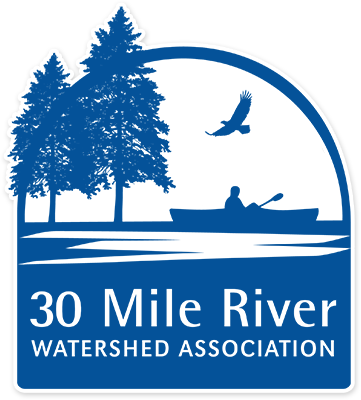Canada geese are a familiar sight here in Maine – often seen in parks, farm fields, and large open areas of lawn, typically near freshwater wetlands, lakes, and ponds. Geese provide important dispersal of seeds to help vegetation grow in new areas, once seeds are digested and excreted by the animal.
Canada geese form life-long pair bonds with their mates. Most Canada geese return to the same breeding area year after year and nest the earliest of any waterfowl.
Evolutionarily, geese are tundra nesters and prefer to nest and congregate adjacent to open water on large areas of low-growing vegetation that provide food for grazing, water access, room to take-off and land, and an unobstructed line of sight so they can easily scan for predators. One of the easiest and effective long-term solutions for eliminating geese problems on a lakefront property is using vegetation to take advantage of a goose’s fear of confinement:
- Create a barrier with native plants: Areas of low-growing vegetation (like lawns) close to the water are prime real estate for geese. Maintaining a stand of native vegetation on your shorefront that is at least waist high (the taller, the better!) is not only good for water quality and shoreline stability, but also keeps geese,and all their waste, off your shorefront. Most geese will molt during the summer months and cannot fly. During this time, they will not stay at any location where they cannot see or easily access the water on foot. Maintaining tall vegetation along the shoreline encourages geese to relocate.
- Take the scenic route to the water: Winding footpaths between your home or camp and your waterfront will prevent geese from having a direct line of sight through vegetated areas, yet still provide shoreline access for humans
- Do not remove aquatic vegetation: Because geese often gain access to grazing areas by walking onshore from the water, aquatic plants growing adjacent to the shoreline can create an additional physical and visual barrier. Native aquatic vegetation at least three feet wide and composed of tall plants, such as bulrush (Scirpus spp.), are most effective.
- Discourage geese entering from above: Vegetation barriers along the waterfront prevent access by water, but may not deter flying geese from entering an area. However, geese typically do not land in an area that is less than 30 feet wide. Reverting large lawns to natural space with taller vegetation, or breaking up larger lawns into smaller spaces using trees and shrubs can deter flying geese from landing in your yard.
Click here for more information.

Photo credit: Ty Smedes, ME IF&W. www.maine.gov
This article was included in 30 Mile’s June 2024 newsletter. To view the full newsletter, click here.
